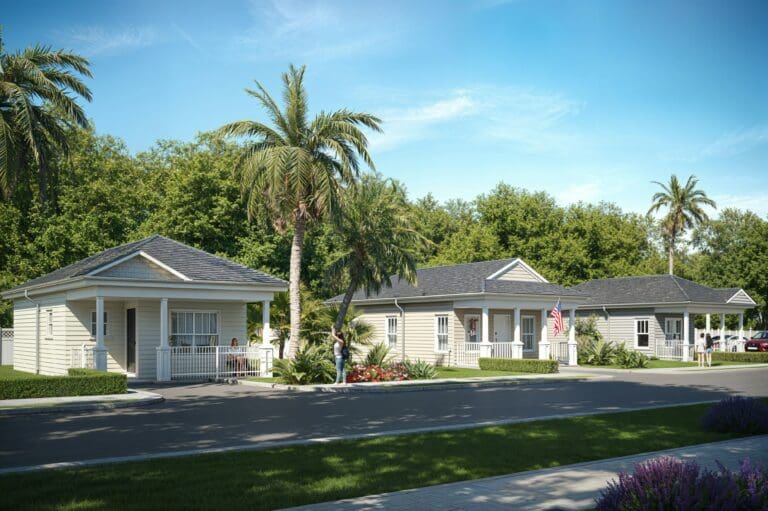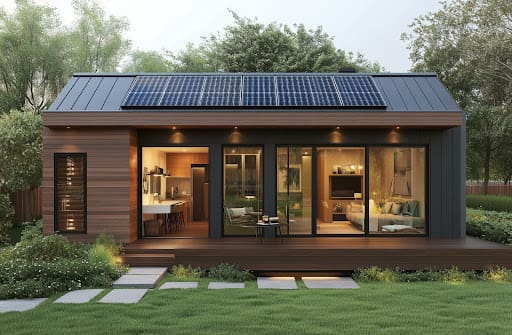Tiny homes continue to gain traction among those striving to address housing affordability. Their smaller footprint and lower cost of construction position them as a practical solution for individuals, families, and communities seeking relief from rising housing prices. At One and Only Tiny Homes, we believe that delivering high-quality, compact residences can support new opportunities for homeownership—especially here in Broward and Palm Beach County, Florida. By examining their contributions to affordable housing initiatives, we can better understand how tiny homes can be a potent force in reshaping property markets and helping people find secure, budget-friendly living arrangements.
Tiny Homes as a Pathway to Affordability
The affordability gap in today’s housing market often boils down to cost. In Florida, the median monthly rent has been climbing steadily, reaching an average of around $1,700 for a one-bedroom apartment in 2023. Tiny homes, which can span 200 to 400 square feet, typically demand fewer materials and hours to build than traditional housing options. As a result, they can cost substantially less to purchase and maintain.
For prospective homeowners, a tiny home can provide a real chance at property ownership without taking on enormous loans. Basic expenses such as utilities, routine repair work, and overall property taxes may be considerably lower for properties with a smaller livable footprint. By strategically planning the layout, it’s possible to pack a surprising amount of comfort and style into a tiny home—a characteristic that continues to draw attention from many walks of life, from retirees to first-time buyers.
Government Policies Encouraging Tiny Homes
One major factor driving the tiny home movement is the shift in local and state policies to support alternative housing. Some municipalities are relaxing zoning restrictions to allow for accessory dwelling units (ADUs)—compact homes situated on existing properties. In states like California, new laws have emerged to encourage local governments to approve ADU construction, paving the way for more tiny-home-friendly landscapes.
Florida has also begun to explore ways to address housing shortages and affordability concerns by revisiting housing regulations. While specifics vary by city and county, local ordinances increasingly reflect a willingness to support innovative housing formats such as tiny homes. In Broward and Palm Beach County, officials have continued to evaluate ways to harness the potential of miniature living spaces without overwhelming existing neighborhoods. This evolving legal landscape suggests that, over time, more property owners and residents could benefit from opportunities to build or invest in tiny homes as part of broader affordable housing initiatives.
Success Stories Across the Country
Though still a relatively small market compared to traditional housing, tiny homes have already begun proving their capability to help people with tight budgets secure a sense of stability. Take, for instance, community-based efforts in urban areas like Detroit, where nonprofits have collaborated to establish tiny home developments for low-income residents. These projects often require a fraction of the construction budget typical of large-scale housing developments, enabling organizations to stretch their resources further.
Meanwhile, in cities like Eugene, Oregon, local officials have embraced tiny homes both as a form of affordable housing and as transitional housing for those experiencing homelessness. Programs that strategically integrate tiny homes into existing city infrastructures can lower barriers to entry, thus allowing more individuals to find safe, dignified living spaces at a cost well below typical market rates.
Potential Societal Impacts in Broward and Palm Beach County, FL
Closer to home, Broward and Palm Beach County are poised to see tangible benefits from prioritizing tiny homes in their affordable housing initiatives. The region has long faced soaring housing prices and limited rental inventory, panoramic coastal views driving demand, and large-scale developments that can exclude moderate- or lower-income earners. Tiny homes present an appealing alternative in these high-demand markets by offering:
- Lower monthly expenses for residents who are priced out of traditional homes.
- A quicker and more scalable construction process, helping grow housing stock to keep pace with population demands.
- Environmental benefits, as smaller living spaces often produce a smaller carbon footprint.
While these counties must navigate zoning rules, utility hookups, and neighborhood association guidelines, prioritizing a thoughtful approach to tiny homes stands to alleviate some of the pressure on local housing markets. Strengthened by community support and carefully drafted ordinances, tiny homes can be placed in areas best suited to manage increased density.
Tiny Homes Beyond Affordability
Of course, tiny homes aren’t simply a cost-cutting measure; they also embody a shift in philosophy. Many people are drawn to the idea of reducing waste and environmental impact, living more lightly, and limiting maintenance tasks that come with larger properties. The sense of freedom, too—both financial and physical—often propels individuals to downsize to a more minimalist lifestyle.
This thread of sustainable living resonates strongly in coastal Florida, where protecting the environment is a critical priority. By occupying far less land space and reducing energy consumption, tiny homes can be part of broader ecological preservation efforts. As climate change prompts more communities to examine building resilience and resource usage, small-footprint residences might become increasingly attractive to policymakers and residents alike.
Explore Our Tiny Home Solutions
If you’re curious about how tiny homes could fit your plans around Broward or Palm Beach County—whether as a primary residence, an ADU for rental income, or to house extended family—One and Only Tiny Homes is here to help. Our expert team focuses on designing and crafting efficient, stylish living spaces that align with Florida’s evolving housing landscape. From initial consultations to move-in day, we strive to bring a customer-focused approach that complements local regulations and the unique desires of each future homeowner.
To learn more about financing options, design possibilities, and regulatory considerations, we welcome you to reach out for additional information. Visit our contact page to schedule a consultation or ask any questions you may have. We look forward to helping you take a meaningful step toward simpler, more affordable living in the Sunshine State.


